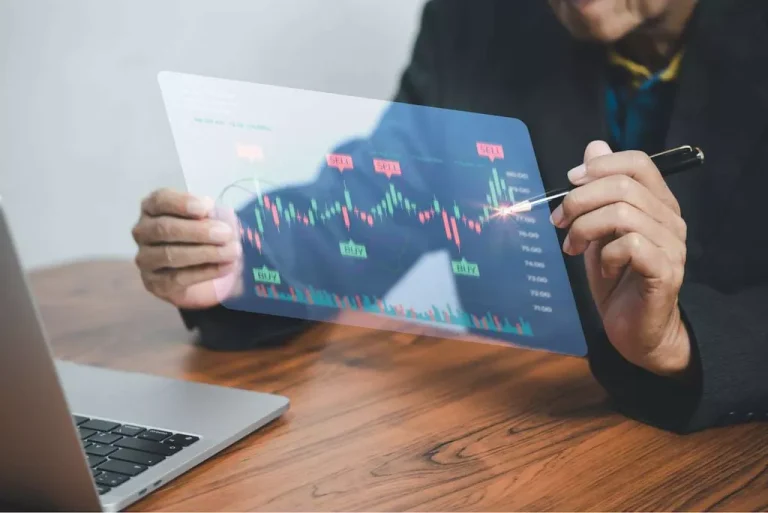What’s An Automatic Market Maker? Amm Explained
They can work as fixed product AMMs for standard trades, however when the value of an asset turns into method too unstable, driving the dangers of liquidations, they will turn into probabilistic AMMs. Over the past few years, many innovative monetary tools have graced the decentralized crypto house. Unabbreviated as the automated market maker, AMMs ensure trustless transactions and trades throughout decentralized exchanges (DEXs), focusing on democratizing finance. AMMs work in a similar fashion as traditional order books in that there are trading pairs for merchants or liquidity suppliers to choose from. The primary difference is that with an AMM, a counterparty (opposing trader) isn’t wanted to complete a trade.
You can consider the order e-book as a diary that data the interest of buyers and sellers for a given asset. If typical exchanges are thought-about peer-to-peer (P2P) exchanges, AMMs could be thought of as peer-to-contract (P2C) exchanges. First, the liquidity of the system is decided by how many people want to commerce at a given moment – and what asset they’re buying and selling. So, say I wanted to make use of my ETH to purchase one of many rarer tokens – for an order book system to be of use to me, there would have to be someone seeking to sell that uncommon crypto for ETH. And even then, we’d still need to agree on value earlier than the commerce may take place. One of the precise problems of the AMM approach to decentralised exchanges is that for very liquid swimming pools much of the funds are sat there doing nothing.
Choice Amms
Automated market makers (AMMs) are part of the decentralized finance (DeFi) ecosystem. They allow digital belongings to be traded in a permissionless and automatic method by using liquidity pools somewhat than a standard market of patrons and sellers. AMM customers provide liquidity pools with crypto tokens, whose prices are determined by a continuing mathematical formulation. Liquidity pools can be optimized for different purposes, and are proving to be an necessary instrument in the DeFi ecosystem. Note that each liquidity pool and even DEX works as a crypto buying and selling platform, and customers should pay buying and selling charges to access the providers. The good contracts the place liquidity suppliers deposit their funds are often recognized as liquidity pools.
For instance, a pockets developer can add their own zero.1% on prime of the zero.2% network payment and hold the difference. Cryptopedia doesn’t assure the reliability of the Site content and shall not be held answerable for any errors, omissions, or inaccuracies. The opinions and views expressed in any Cryptopedia article are solely those of the author(s) and do not replicate the opinions of Gemini or its administration amms crypto. The information provided on the Site is for informational functions solely, and it does not represent an endorsement of any of the services and products discussed or investment, monetary, or buying and selling recommendation. A certified skilled should be consulted prior to making financial choices.

These AMMs are meant to infuse liquidity into the otherwise illiquid NFT house. Uniswap has just lately launched the UniswapX protocol — a better approach to commerce throughout AMMs, offering improved liquidity, zero transaction failure, and even gas-free swapping. This is ready to take the concept of constant product AMMs to an entire new level. The services returned by the car wash are synonymous with the swapped tokens, which a particular liquidity pool of the involved AMM provides in return for the deposits. For traders, they can commerce with extra pace and transparency, because the liquidity pool is all the time out there with a fixed buying and selling value. In contrast, AMMs work to enhance decentralization (yes, as the name implies) enhance liquidity and scale back manipulation within the industry.
What Is An Automatic Market Maker (amm)?
When a pool is created, the parameters enable for a customized pool charge, enabling it to compete towards Uniswap and different AMMs. The pool fee can be adjusted primarily based on volatility and the market conditions around the set belongings in the pool. With Balancer, swimming pools can be created that embody up to 8 tokens in a single liquidity pool. This function opens up the potential for varied use instances, probably the most prominent being an automatic portfolio supervisor that may act as an index. Unlike Kyber Network, the price within the Uniswap good contract can’t be configured or controlled. The value of the tokens in the pool is absolutely decided by the steadiness ratio between the two tokens within the pool.
Synthetix is a protocol for the issuance of synthetic belongings that tracks and offers returns for an additional asset with out requiring you to hold that asset. To trade with fiat currency, customers usually must undergo a centralized trade or different on/off-ramp providers to convert fiat to cryptocurrency earlier than interacting with AMMs. In Uniswap, that payment goes directly to pool contributors, whereas in Balancer, a dynamic trade payment is set by the pool proprietor and proportionally distributed to pool LPs. Some AMMs like Uniswap serve as decentralized worth oracles, permitting other DeFi protocols to access real-time price-based data.
Liquidity providers are additionally better protected from impermanent loss as a result of all stablecoins in the pools are pegged to a single value. Therefore liquidity providers have nearly no loss in worth between the property since they are all delicate pegged to the greenback (or Bitcoin with the tokenized bitcoin tokens). It can be essential to assume about slippage – the distinction within the order price and the precise trade worth.
The Path Forward For Amms
Despite being a source of impermanent loss, AMMs additionally provide solutions to the same. These can be within the type of probabilistic AMMs with specialized mathematical algorithms in play. For example, when you plan to purchase ETH, buying and selling at $1,900 on most exchanges, on an AMM, you might need to consider the ETH/USDT steadiness earlier than moving in. Unlike conventional order books, the place humans handle the buying and selling, AMMs support automated buying and selling with liquidity suppliers, DeFi customers, and extra intertwined with smart contracts. If you’re concerned about transferring the market and value slippage on a DEX you’ll have the ability to contemplate breaking your trades into smaller chunks, waiting for the liquidity pools to rebalance. This, nonetheless, needs to be balanced in opposition to paying larger charges for extra transactions.
So if Joe needs to purchase zero.25 BTC for an quantity of Ethereum, and Jane wants to promote zero.25 BTC for an equal amount of BTC, a centralized change will match Joe and Jane seamlessly. Chainalysis reported that $364million was stolen via Flash Loan attacks on DEFI protocols in 2021. If a DEX is exploited you could lose your funds with no guarantees that you will get something again. Chainalysis reported that DEFI accounted for $2.3bn of crypto-related crime in 2021.
Learn more about Automated Market Maker or AMM protocols and determine new, efficient approaches for trading your crypto holdings. The liquidity swimming pools are principally a large pile of funds that traders could commerce against. Liquidity providers can earn a certain share of charges from the trades occurring in their pool for offering liquidity within the automated market maker algorithm. As a matter of truth, liquidity providers are one of the most necessary aspects in answers to “How do automated market makers work?
- Plus, this type of trading doesn’t render the market risky in case some massive orders undergo.
- Liquidity providers earn more in fees (albeit on a decrease fee-per-trade basis) as a outcome of capital is used extra efficiently, whereas arbitrageurs still profit from rebalancing the pool.
- For occasion, Uniswap V2 provided merchants the ability to create liquidity for any ERC-20 token pair.
- Although each mathematical formulation utilized by every protocol might differ, all of them share the same underlying perform, which is to discover out an asset’s worth algorithmically.
- This article explains what automated market makers are, how they work, and why they are critical to the DeFi ecosystem.
- The charges collected from the trades are proportionally distributed to the pool liquidity suppliers based on their share of deposits within the pool.
This leg, or somewhat the use-case of automated market makers, is at the core of liquidity swimming pools. Liquidity suppliers provide liquidity, which they construct on top of for producing greater yields by way of yield farming. If you would possibly be solely taking a look at liquidity provisioning as a use case, platforms like Cure Finance and Uniswap are the ones to concentrate on.
Liquidity-as-a-service Amms
Want to get an in-depth understanding of crypto fundamentals, buying and selling and investing strategies? Build your id as an authorized blockchain expert with one hundred and one Blockchains’ Blockchain Certifications designed to provide enhanced profession prospects.

Kyber Network was one of many first AMMs to introduce automated liquidity swimming pools to the crypto ecosystem in early 2018. While other types of decentralized exchange (DEX) designs exist, AMM-based DEXs have turn into extremely well-liked, offering deep liquidity for a variety of digital tokens. The AMMs also profit the liquidity supplier, as they get a fraction of the fees paid on transactions in the pool. AMMs like Balancer have weightage-specific solutions in place, lowering the price sensitivity and inherent volatility of property. Then we’ve Curve Finance, where the pools primarily deal in stablecoins — that are supposed to carry steady values.
The protocol’s token, BAL, is distributed by the proportion of liquidity provided to the accredited token pools. The distribution fee and permitted tokens are actively discussed in governance. For occasion, they have implemented multi-token pools, dynamic pool fees, personal swimming pools, and customized pool ratios. Flat fees are often charged to every pool trade, usually round zero.3%, usually growing if a number of pool trades are concerned. Depending on the dimensions and complexity of your trade, it is worth checking these with each AMM protocol. In line with the Trust Project guidelines, the educational content material on this web site is obtainable in good faith and for general info purposes solely.
